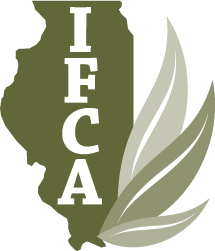Evaluating Impact of House Ways & Means Proposal for Tax Changes
New details for a potential $3.5 trillion spending and tax package were released by the House Ways & Means Committee on Monday September 13, 2021, including a proposal for funding new policies advanced by Democrats. This package includes proposals for several changes to the tax code intended to generate additional tax revenues. Several of these provisions could impact farmers; however, two tax changes proposed earlier in the year were not included: a new tax on property transfer to attain a step-up in basis and limitations on like-kind exchanges. It is important to note that this proposal is not the final version that will pass in the House and the Senate. Regardless, these details represent an important step in what will likely be a long, involved process.
Since the beginning of the year, several proposals for both government spending and increasing tax revenue have been generated by Congress and the White House, including draft legislation and the American Families Plan. Of these tax proposals, farmers and farm groups were most concerned about new tax on property transfers and limitations on like-kind exchanges. In particular, the new tax on property transfers would require the recipient of property with a gain in value to pay a tax on the difference in the original basis in the property and the value at time of transfer. This would impact transfer of farm estates from one generation to the next, potentially making it more difficult to transfer the farm to the next generation.
In effort to advance at least some portion of these proposals, Congress has been working on a $3.5 trillion spending and tax package (2,3). This spending portion of the package includes the framework to enact many of the Democrats social, economic, and environmental policies included in the Build Back Better agenda (4), such as incentivizing green energy, assisting families with child costs, and lowering education and prescription drug costs. The intent is to fully offset this spending with a combination of new tax revenue targeted at wealth, health care savings, and long-term economic growth.
Click Here to read more.
Since the beginning of the year, several proposals for both government spending and increasing tax revenue have been generated by Congress and the White House, including draft legislation and the American Families Plan. Of these tax proposals, farmers and farm groups were most concerned about new tax on property transfers and limitations on like-kind exchanges. In particular, the new tax on property transfers would require the recipient of property with a gain in value to pay a tax on the difference in the original basis in the property and the value at time of transfer. This would impact transfer of farm estates from one generation to the next, potentially making it more difficult to transfer the farm to the next generation.
In effort to advance at least some portion of these proposals, Congress has been working on a $3.5 trillion spending and tax package (2,3). This spending portion of the package includes the framework to enact many of the Democrats social, economic, and environmental policies included in the Build Back Better agenda (4), such as incentivizing green energy, assisting families with child costs, and lowering education and prescription drug costs. The intent is to fully offset this spending with a combination of new tax revenue targeted at wealth, health care savings, and long-term economic growth.
Click Here to read more.
